Text
WOII Compulsory: In Summary
I didn’t anticipate how profoundly World of Ideas and Imagination would fuse my twin passions for philosophy and design. This module became a revelation, transforming my concept of design from a service into a vital language for interrogating reality itself. Through poststructuralism, I found academic rigor for my instinctive questioning, with Derrida’s différance (Of Grammatology 23) and Foucault’s power/knowledge (Discipline and Punish 135) giving form to my skepticism about “objective” design. As Victor Papanek insists in Design for the Real World, designers bear “a social and moral responsibility” to challenge harmful systems rather than serve them (Papanek 15), a mandate this module embodied.
The module crystallized why I've always resisted rigid design rules. As Gilles Deleuze argues, "Thinking is always experiencing, experimenting with what exceeds our grasp" (What Is Philosophy? 111). WOII showed me that good design isn't about answers, but about asking better questions. Whether through pixelated slogans or collaged explosions. This aligns with Ellen Lupton’s claim that “design is a form of storytelling that shapes reality” (Design Is Storytelling 7), proving theoretical rigor is the bedrock of impactful work.
My journey finds its visual counterpart in Jenny Holzer’s work. Her works show how text can punch through complacency. Where words flicker between poetry and protest, digital and concrete, resonating with the insightful takeaways I've had in WOII.
Total Word Count: 219 Words
------------------------------------------------------------------------------
Works Cited
Deleuze, Gilles and Félix Guattari. What Is Philosophy? Columbia UP, 1994.
Derrida, Jacques. Of Grammatology. Johns Hopkins UP, 1997.
Foucault, Michel. Discipline and Punish. Vintage, 1995.
Lupton, Ellen. Design Is Storytelling. Cooper Hewitt, 2017.
Papanek, Victor. Design for the Real World. 2nd ed., Chicago Review Press, 2005.
------------------------------------------------------------------------------


"Truisms" (1977-79)







"Inflammatory Essays" (1979-82)

"Projections" (1986-present)
#JennyHolzer#TextArt#ConceptualArt#DesignActivism#PowerOfWords#TypographyAsProtest#PublicArt#LanguageArt#CriticalDesign#WOII#Poststructuralism#Postmodernism#VisualCulture#DesignPhilosophy#ArtAndTechnology#LEDArt#PoliticalArt#WordArt#DesignIsWeapon#Truisms#InflammatoryEssays#ProjectionArt#DigitalArt#DesignThinking#ArtAsIntervention#CommunicationDesign#TypeDesign#DesignEducation#RadicalDesign#DesignForChange
0 notes
Text
WOII: Week 11 - Postmodernism
Postmodernism’s fundamental questioning of fixed meaning has significantly reshaped my understanding of even commonplace consumer objects. Lyotard’s concept of an "incredulity toward metanarratives" (Lyotard xxiv) became evident during our Vicks inhaler ad project. This seemingly ordinary product, revealed itself as a capitalist symbol promising "relief" through menthol and strategic marketing. We employed postmodern strategies to expose this, glitching visuals mimicking corrupted data, pixelated representations of reality, and ransom-note typography assembled from disparate magazine fragments. The resulting design was a Baudrillardian simulacrum (Baudrillard 2). An ad critiquing ads, where the product’s supposed "purity" intentionally dissolved into absurdity.
Nietzsche’s assertion that "truths are metaphors we’ve forgotten are metaphors" ("On Truth and Lies" 84) provided a crucial framework for our critique. The inhaler’s branding, nature (menthol) strategically repackaged as consumer salvation, mirrored Haraway’s cyborg theory, where the boundaries between the organic and the industrial become blurred (Haraway 149). Our design amplified this inherent tension: comic book 'BOOM' were juxtaposed with the corporate blue of the packaging and background, compelling viewers to question: Is the feeling of relief a genuine sensation or a carefully manufactured product of persuasive imagery?
This resonates with Richard Prince, who rephotographed advertisements to deconstruct corporate fabrications. His work, His Untitled (Cowboy) (1989) ask: who ultimately benefits from this constructed narrative? Similarly, our advertisement for the Vicks inhaler "hijacked" it's comforting imagery to prompt the question: who profits from selling us the very act of breathing? Prince’s work, like ours, engages with consumerism not through outright rejection, but through a critical exposure of its underlying contradictions.
Total Word Count: 256 Words

------------------------------------------------------------------------------
Works Cited
Baudrillard, Jean. Simulacra and Simulation. U of Michigan P, 1994.
Haraway, Donna. Simians, Cyborgs, and Women. Routledge, 1991.
Lyotard, Jean-François. The Postmodern Condition. U of Minnesota P, 1984.
Nietzsche, Friedrich. “On Truth and Lies in a Nonmoral Sense.” Philosophy and Truth, 1979, pp. 79–97.
Prince, Richard. Cowboys. Museum of Modern Art, 2007.
------------------------------------------------------------------------------


"Untitled (Cowboy)" (1989)

"New Portraits (Instagram Paintings)" (2014-2015)

"Untitled (Fashion)" (1982-84)
#RichardPrince#AppropriationArt#Postmodernism#ConsumerCulture#AdvertisingCritique#ContemporaryArt#DesignTheory#MediaStudies#VisualCulture#ArtAndCommerce#CulturalAppropriation#Simulacra#Hyperreality#Baudrillard#PostmodernArt#ConceptualArt#ArtAsCritique#VisualSemiotics#BrandSubversion#MarlboroMan#InstagramArt#DigitalAppropriation#ContemporaryPhotography#ArtAndCapitalism#MediaCritique
0 notes
Text
WOII: Week 10 - Poststructuralism
This week’s exploration of poststructuralism has fundamentally shifted my understanding of design's relationship with meaning. Derrida’s concept of différance, the idea that meaning is fluid and perpetually deferred within language (Derrida 23), strongly resonated with our activity’s deliberate juxtapositions. The pairing of "got birds?" with water ripples evolved into a poignant question about ecological fragility, while "emergency intercom" alongside marbled umbrellas transformed weather data into a surreal warning. These exercises highlighted that meaning isn't inherent but actively constructed through contextual interaction.
Foucault’s power/knowledge framework (Foucault 135) has significantly impacted my perspective on design practice. The seemingly simple locker with a push bar now represents how visual hierarchies, such as grids and typography, can subtly enforce control. My previous inclination towards "clean" layouts now feels potentially complicit in prioritizing singular interpretations over the richness of ambiguity, a notion reinforced by Nietzsche’s assertion: “Truths are metaphors we’ve forgotten are metaphors” (Nietzsche 84). This prompts a critical re-evaluation: why not allow textual elements to fragment into abstraction or images to resist singular narratives, embracing a more open and participatory engagement with the viewer's interpretation?
This perspective aligns with Barnett Newman, whose abstract canvases deliberately reject representational certainty. His zip paintings, vertical lines bisecting fields of color, refuse fixed meaning, inviting individual and subjective interpretation. Similar to poststructuralist thought, Newman’s work suggests that meaning isn't a static discovery but an active construction by the observer. This week has challenged my core assumptions about design's communicative function, pushing me towards a more dynamic and less prescriptive approach that acknowledges the inherent instability of meaning.
Total word count: 259 Words
------------------------------------------------------------------------------
Works Cited
Derrida, Jacques. Of Grammatology. Translated by Gayatri Spivak, Johns Hopkins UP, 1997.
Foucault, Michel. Discipline and Punish: The Birth of the Prison. Translated by Alan Sheridan, Vintage, 1995.
Newman, Barnett. The Sublime Is Now. 1948, Tiger’s Eye, vol. 1, no. 6, pp. 51–53.
Nietzsche, Friedrich. “On Truth and Lies in a Nonmoral Sense.” Philosophy and Truth, edited by Daniel Breazeale, Humanities Press, 1979, pp. 79–97.


------------------------------------------------------------------------------

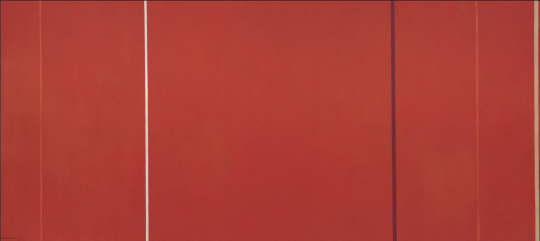
"Vir Heroicus Sublimis" (1950-51)

"Who’s Afraid of Red, Yellow and Blue I" (1966)

"Onement I" (1948)
#SublimeChaos#DesignIsPolitical#ArtIsFreedom#EmbraceAmbiguity#UnlearnRules#VisualPoetry#DesignAsArt#ChaosAndOrder#Poststructuralism#Derrida#Foucault#Nietzsche#CriticalTheory#Deconstruction#Semiotics#VisualTheory#DesignPhilosophy#BarnettNewman#AbstractExpressionism#ModernArt#ArtTheory#PowerKnowledge#Différance#Epistemology#Aesthetics#ContemporaryPhilosophy#VisualCulture#DesignCriticism#ArtAndPhilosophy#Structuralism
0 notes
Text
WOII Compulsory: Week 5 & 6 - Design Analysis and Field Trip
Week 5 (170 words) In today’s session, we focused on the significance of materiality and craftsmanship in design. I brought three personal items: my stainless steel necklace, my fan, and my water bottle. The necklace, worn daily for over three years, has become a part of my identity, representing durability and resilience. Similarly, my fan, customized with a Hachiware sticker, is highly functional, providing strong airflow, while my water bottle, adorned with a lucky charm from Osaka, reflects my personal belief system. These objects highlight the importance of materials and craftsmanship, elevating the functionality of each item. Applying the “How Design Means” framework, I observed that these objects communicate more than just their utilitarian purpose, they reflect aspects of my identity, echoing class discussions on how design can be both practical and emotionally significant (Chandler 87). This reinforces how objects in our daily lives can transcend utility, serving as personal symbols of memory and connection.
Week 6 (160 words) During the Kampong Gelam field trip, I documented various works of design that embody the theme of cultural transformation through materiality and identity. I observed three works that blend tradition with modernity: traditional painted bowls and plates, a mural depicting old Kampong Gelam, and graffiti tags on a nearby wall. Despite their contrasting styles, these works form an interesting grouping under the theme of “Memory and Transformation.” The painted bowls and plates, with their intricate designs, are steeped in cultural tradition, representing continuity and heritage. The mural, showcasing a nostalgic image of Kampong Gelam, reflects the transformation of the district, acting as a collective memory. In contrast, the graffiti tags, often rebellious and transient, symbolize change, voicing the new generation’s sentiments. This juxtaposition of past and present highlights the evolving identity of Kampong Gelam, illustrating how design encapsulates memory, protest, and transformation (Berger 102; Barthes 65). These objects serve as powerful symbols of the district’s social and historical context.
Total Word Count: 330 Words



------------------------------------------------------------------------------
Works Cited
Barthes, Roland. Image Music Text. Fontana Press, 1977.
Berger, John. Ways of Seeing. Penguin Books, 1972.
Chandler, Daniel. Semiotics: The Basics. Routledge, 2002.
------------------------------------------------------------------------------
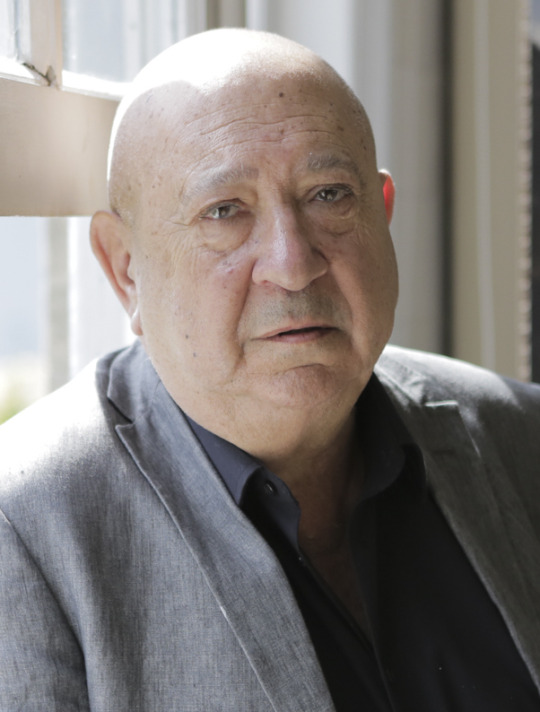

The Children of Dijon, 1986

"No Man's Land" (2005)

"Personnes" (2010)
#TransformationInDesign#MemoryInArt#DesignAndMemory#KampongGelam#CulturalIdentity#MaterialityInDesign#MemoryThroughMaterial#HistoryAndDesign#ContemporaryArt#DesignEvolution#HeritageAndModernity#ArtAndCraftsmanship#DesignAsStorytelling#MemoryAndPlace#CulturalTransformation#SocialHistoryInArt#CulturalNarratives#PersonalIdentityInDesign#DesignReflections#DesignForChange#MemoryInUrbanSpaces#KampongGelamDistrict#ArtAsProtest#CraftAndTradition#TransformationThroughArt#NostalgiaInDesign#ArtAndPlace#DesigningThePast#DesignInContext#SocialContextInDesign
0 notes
Text
WOII: Week 4 - Semiotics
Today's session explored semiotics, examining how signs and symbols communicate deeper meanings. Semiotics plays a vital role in design by ensuring visuals don't just represent but also evoke specific emotions and responses from the audience (Chandler 78).
For my personal analysis, I selected a Nike ad with a simple white background and the tagline, "Yesterday you said tomorrow." The typography in this design is central to its message. The use of bold, clean type creates emphasis, drawing attention to the urgency of the words. The scale of the type suggests importance and motivates action, reinforcing Nike’s call to stop procrastinating and take immediate steps toward improvement.
The design's simplicity, with minimal elements, focuses on clarity and directness. The white background creates a sense of space and calm, allowing the message to dominate without distraction. The type itself, likely in a strong sans-serif font, communicates a sense of strength, confidence, and modernity, aligning with Nike’s brand values of empowerment and self-improvement.
The message, "Yesterday you said tomorrow," functions as an indexical sign, referring to the idea of procrastination. It speaks to a broad audience, particularly individuals who value productivity and self-discipline. However, it could also exclude audiences who view such ideals as overly commercial or stressful, instead preferring a more balanced, relaxed approach to personal growth.
This ad exemplifies how design principles like emphasis, scale, and space work together to create a meaningful message, demonstrating the importance of semiotics in visual communication.
Word Count: 254 Words
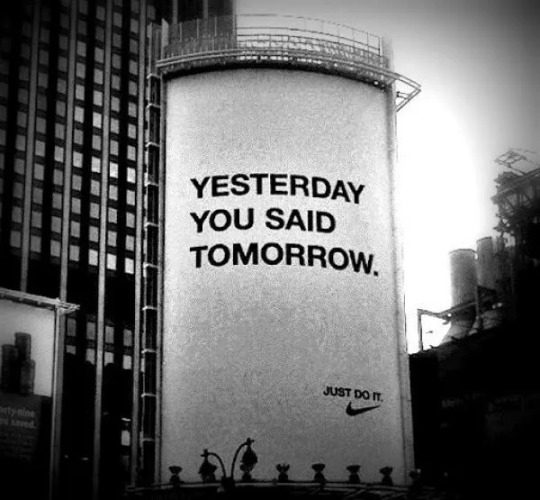
--------------------------------------------------------------
Works Cited
Barthes, Roland. Image-Music-Text. Translated by Stephen Heath, Fontana Press, 1977.
Chandler, Daniel. Semiotics: The Basics. Routledge, 2002. Eco, Umberto. A Theory of Semiotics. Indiana University Press, 1976.
--------------------------------------------------------------

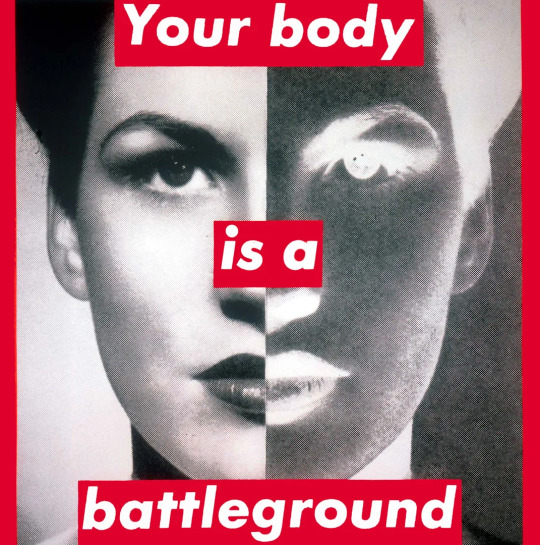
"Your Body Is a Battleground" (1989)

"I Shop Therefore I Am" (1987)
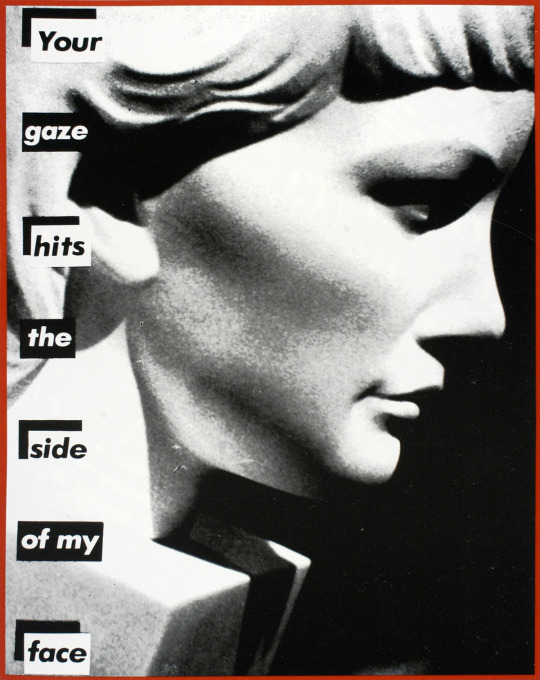
"Your Gaze Hits the Side of My Face" (1981)
#BarbaraKruger#SemioticsInArt#VisualCommunication#CulturalCritique#GenderPolitics#PowerAndIdentity#ConsumerCulture#SocialNorms#RepresentationMatters#FeministArt#CulturalSignifiers#ContemporaryArt#ArtAndSociety#VisualMetaphor#IdentityAndConsumerism#TextAndImage#ArtOfProtest#CulturalSymbols#VisualPower#SocialCommentary#ArtAsActivism#Materialism#TheMaleGaze#BodyPolitics#ArtAndPolitics#VisualIdentity#SymbolicMeaning#DesignAndSemiotics#ArtTheory#CriticalDesign
0 notes
Text
WOII: Week 1 - Phenomenology
Today's session explored phenomenology through shadows and time, focusing on how perception is shaped by lived experience. Using photography and drawing, I examined how light and shadow are not just visual elements, but also emotional and embodied experiences.
Phenomenology emphasizes how we experience the world through perception, highlighting subjective experience over objective truths. In design, this is critical, as it deepens engagement with how users interpret visual elements. Shadows, for example, carry emotional weight beyond their visual form, shaped by time and memory. In my photographic work, I noticed how shadows shift throughout the day, reflecting time's fluidity. This aligns with Merleau-Ponty’s idea of embodied perception, suggesting that our experience is always mediated by consciousness (Merleau-Ponty 213). Kandinsky’s theories on abstraction also show how visual elements transcend their physical form to evoke emotions (Kandinsky 89), a key understanding for designers.
The drawing exercise connected these ideas to design practice. By representing literal shadows, I revealed deeper meanings absence, identity, and the passage of time concepts designers can use to communicate beyond the surface. Paula Scher’s typography demonstrates how form and layout influence perception, much like shadows shape space (Scher 45). Giorgio de Chirico’s surrealist works use exaggerated shadows to create a dreamlike atmosphere, emphasizing the storytelling power of light and form (de Chirico 102). Phenomenology teaches that design is not just about aesthetics but also about the emotional and experiential responses it evokes.
Total word count: 253 Words



------------------------------------------------------------------------------
Works Cited
de Chirico, Giorgio. The Enigma of Arrival and the Afternoon. Thames & Hudson, 1995.
Husserl, Edmund. The Phenomenology of Internal Time-Consciousness. Translated by James S. Churchill, Indiana University Press, 1964.
Kandinsky, Wassily. Point and Line to Plane. Translated by Howard Dearstyne and Hilla Rebay, Dover Publications, 1979.
Merleau-Ponty, Maurice. Phenomenology of Perception. Translated by Donald A. Landes, Routledge, 2013.
Scher, Paula. Make It Bigger. Princeton Architectural Press, 2005.
------------------------------------------------------------------------------
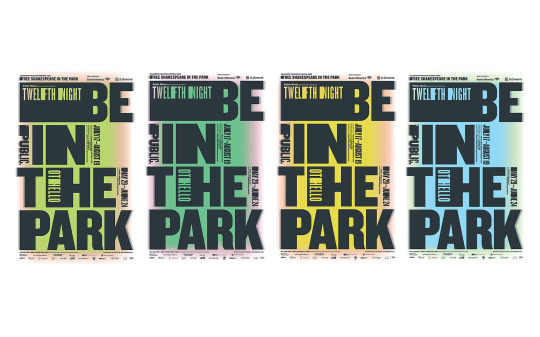
Paula Scher – "Shakespeare in the Park" Poster Series
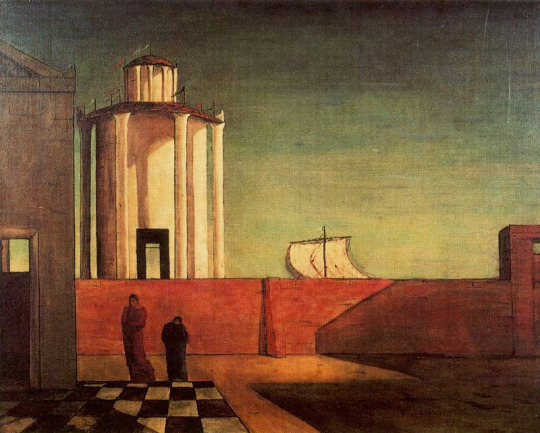
Giorgio de Chirico – "The Enigma of the Arrival and the Afternoon"
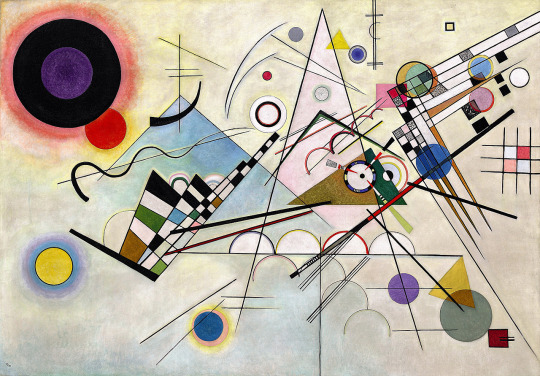
Kandinsky – "Composition VIII"
#Phenomenology#ShadowsAndTime#EmotionalDesign#TypographyDesign#AbstractArt#Kandinsky#CompositionVIII#Surrealism#DeChirico#TheEnigmaOfArrival#PaulaScher#ShakespeareInThePark#DesignAndPerception#EmbodiedExperience#DesignPrinciples#LightAndShadow#VisualCommunication#CulturalMeaning#ArtAndDesign#InterpretationInDesign#EmotionalResponse#SubjectiveExperience#PerceptionInArt#TypographicExpression#ArtisticPerception#FormAndMeaning#DesignForEmotion#SpaceAndPerception#MemoryInDesign#TimeAndDesign
0 notes
Text
Week 12: Connecting CTS A to My Learning and Professional Journey
I want to collaborate on projects that integrate design and fashion, such as creating posters and visual campaigns for fashion students to showcase their work. Art direction is another area I aspire to explore. Lessons from CTS A, especially on emotional intelligence, play a significant role in this pursuit. Emotional intelligence has taught me to be more empathetic, understand team dynamics better, and communicate effectively essential traits for collaborative and art direction projects. It helps me connect with team members, acknowledge diverse perspectives, and manage conflicts constructively, ensuring smoother collaboration and more cohesive outcomes.
These skills are crucial when working with fashion students to create compelling posters that highlight their creative visions. Art direction, with its need for coordination and clear communication, benefits from the emotional awareness I developed in CTS A. The module’s emphasis on critical thinking and problem-solving has also prepared me to make quick, informed decisions in creative settings, contributing to impactful visual storytelling. This learning journey has enhanced my ability to approach challenges with a solution-oriented mindset, whether in collaborative or independent projects, ensuring that I can think through each step and adapt when necessary (Kleiman 101).
CTS A has opened me up to new ways of thinking and creative exploration as I embark on my first year of study. The lessons on networking and collaboration have already started to shape my professional journey by pushing me to engage with a wider variety of ideas and opportunities. The module encourages me to step out of my comfort zone, try new things, and connect with people from diverse disciplines ultimately helping me become a more well-rounded and adaptable designer. These lessons are foundational in building my reputation as a thoughtful, effective leader, ready to take on challenges and foster positive relationships.
Total word count: 330 Words



------------------------------------------------------------------------------
Works Cited:
Kleiman, L. (2017). The Importance of Critical Thinking in Design Education. Journal of Design Thinking, 14(2), 98-104.
------------------------------------------------------------------------------


untitled (free/still) 1992/1995/2007/2011 - Rirkrit Tiravanija
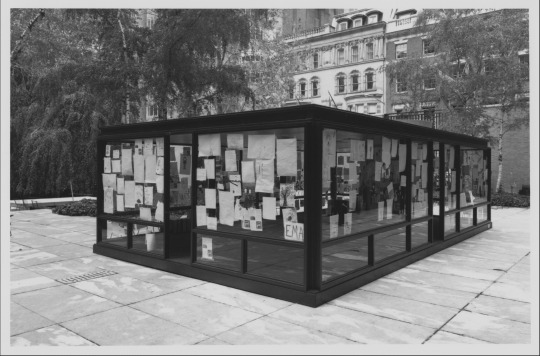

Projects 58, 1997 - Rirkrit Tiravanija


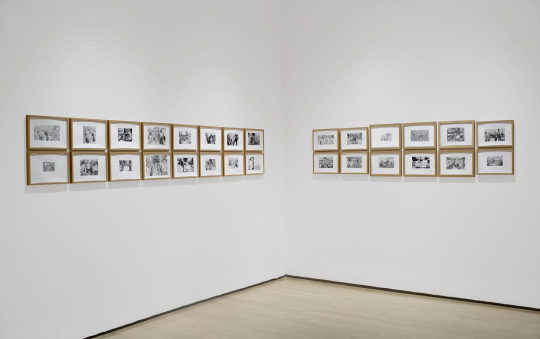
Demonstration Drawings, 2008 - Rirkrit Tiravanija
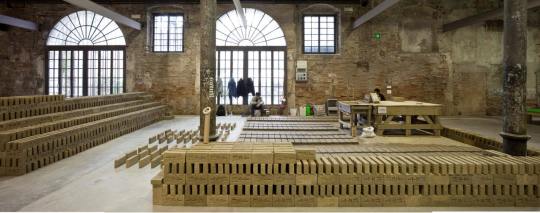


Untitled, 2015 (14,086 unfired) - Rirkit Tiravanjia
#DesignCollaboration#ArtDirection#FashionDesign#CreativeJourney#EmotionalIntelligence#LeadershipSkills#CTSInfluence#MultiSkilledDesigner#EmpathyInDesign#CreativeProblemSolving#Networking#VisualStorytelling#DesignLeadership#Adaptability
1 note
·
View note
Text
Week 11: Connecting CTS A to my other modules
Connecting CTS A to my modules has solidified the role of critical thinking in my design journey.
In Studio, CTS A’s structured analysis has enhanced my visual thinking approach, allowing me to create marks and images that are expressive and contextually relevant. Research frameworks in Studio that consider multiple perspectives and question assumptions have changed my approach to using quotations and sources effectively, enriching my research quality (Lai). CTS A’s focus on form and meaning aligns with Typo Sensory, improving my ability to craft typography that resonates emotionally (Lai). CTS A’s emphasis on analyzing relationships between elements has also influenced Type and Language, enhancing my layout skills and visual cohesion (Facione). For Hollywood Bling, applying critical thought has refined my rotoscoping plans and execution with detailed innovation. The Data Space component has especially benefited from CTS A’s systematic research approach, adding depth to my narrative classification (Goleman).
In Craft Workshop under D-CE102, CTS A has guided my mark-making approach, strategically using dots, lines, and patterns for dynamic compositions. A critical lens on color theory has improved my palette choices, making my designs more intentional. Analyzing positive and negative space has sharpened my ability to create balanced work. Abstraction and synthesizing form, color, and text are more impactful due to my capability to deconstruct and rebuild visuals meaningfully (Goleman).
In Photography, CTS A has informed my understanding of composition, making my photos conceptually engaging. Applying principles such as balance and perspective with deeper consideration links intent to outcome, aligning with CTS A’s evaluative approach to storytelling (Lai).
For Digital Skills and Applications, CTS A’s critical thinking habits enhance my use of Illustrator, Premiere Pro, and Photoshop with structured problem-solving. My rotoscoping and InDesign tasks are approached with clear strategies and adaptability (Schoeberlein and Sheth).
Total word count: 330 Words



------------------------------------------------------------------------------
Works Cited:
Facione, Peter A. Critical Thinking: What It Is and Why It Counts. Insight Assessment, 2011.
Goleman, Daniel. Emotional Intelligence: Why It Can Matter More Than IQ. Bantam Books, 1995.
Lai, Emily R. Critical Thinking: A Literature Review. Pearson Research Reports, 2011.
Schoeberlein, Deborah, and Suki Sheth. Mindful Teaching and Teaching Mindfulness: A Guide for Anyone Who Teaches Anything. Wisdom Publications, 2009.
------------------------------------------------------------------------------



Contraband, Helsinki City Art Museum, Helsinki, 2012 - Taryn Simon


A Living Man Declared Dead and Other Chapters I – XVIII, Neue Nationalgalerie, Berlin, 2011 - Taryn Simon




A Polite Fiction, 2014 - Taryn Simon
#Hashtags:#CriticalThinking#DesignJourney#VisualThinking#CraftWorkshop#Studio1#Photography#Typography#ResearchFrameworks#DigitalSkills#EmotionalIntelligence#CreativeProcess#DesignModules#tarynsimon
0 notes
Text
Week 10: Discussing the Seven Weekly Topics as a Whole
Discussing the seven weekly topics as a whole highlighted the multifaceted nature of critical thinking in design. Each topic offered a unique approach, from understanding visual metaphors to the significance of structured research and collaborative work. The Critical Thinking Skills module has impacted my approach as a designer and student representative by enhancing my learning and leadership capabilities. Week 1’s introduction to critical thinking reshaped my analytical process, reinforcing the value of questioning assumptions and approaching issues from multiple perspectives. This has aided my CPJ work, encouraging more thoughtful reflections and better project outcomes!
Week 2’s collaborative skills proved essential for my group projects in Studio, teaching me to communicate effectively and balance different viewpoints. This skill has also been crucial in my role as class representative, enabling me to mediate discussions and foster an inclusive environment. Effective communication is key to building trust within teams (Wheelan).
Week 3’s focus on emotional intelligence taught me to manage stress and understand team dynamics better. This has been particularly helpful in coordinating group efforts and addressing classmates’ concerns. Emotional intelligence also played a key role in maintaining composure during demanding assignments, supporting personal growth and teamwork (Goleman).
Week 5’s growth mindset encouraged me to view challenges as opportunities for improvement. Applying this in Craft Workshop allowed me to experiment without fear of failure, fostering innovation. It also inspired me to encourage peers to take creative risks, boosting morale during group efforts.
Week 9’s digital media documentation reinforced the importance of tracking creative processes. Integrating this into my CPJ led to clearer project presentations, adding value to my role as a student representative, where structured documentation aids communication.
These interconnected topics formed a toolkit that improved my ability to lead and collaborate. Understanding critical thinking, emotional intelligence, and growth mindset made me more empathetic and effective in group settings, supporting my leadership and academic growth.
Total word count: 330 Words
------------------------------------------------------------------------------
Works Cited:
Goleman, Daniel. Emotional Intelligence: Why It Can Matter More Than IQ. Bantam, 1995.
Wheelan, Susan A. Creating Effective Teams: A Guide for Members and Leaders. SAGE Publications, 2016.
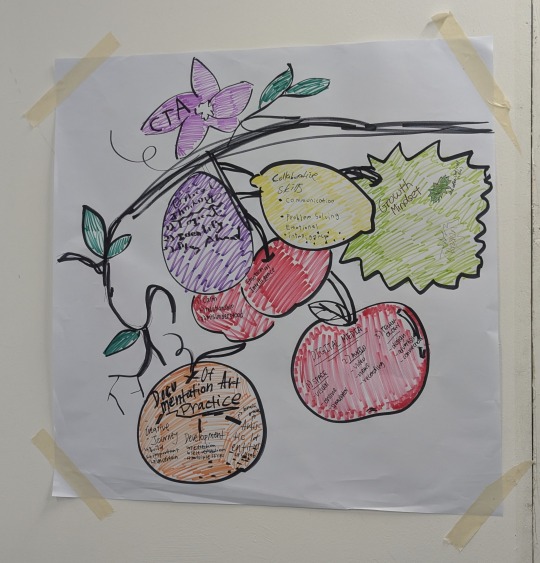
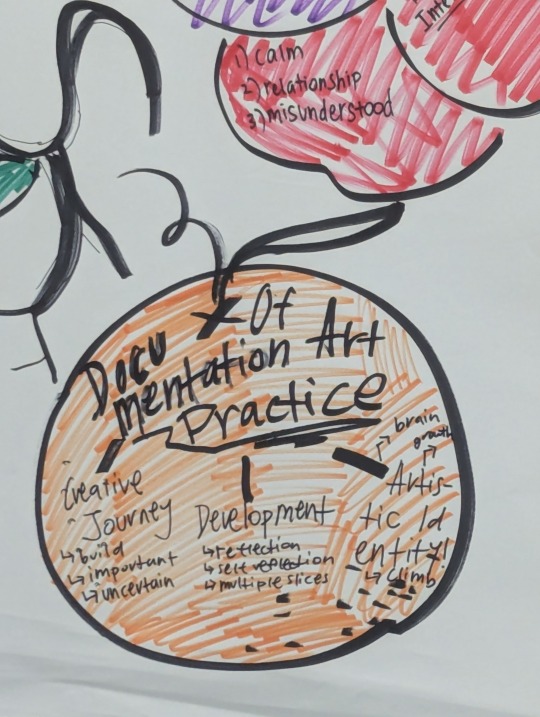
------------------------------------------------------------------------------

Aftermath of Obliteration of Eternity, 2009 - Yayoi Kusama


Infinity Mirrored Room – Love Forever, 1966/1994 - Yayoi Kusama
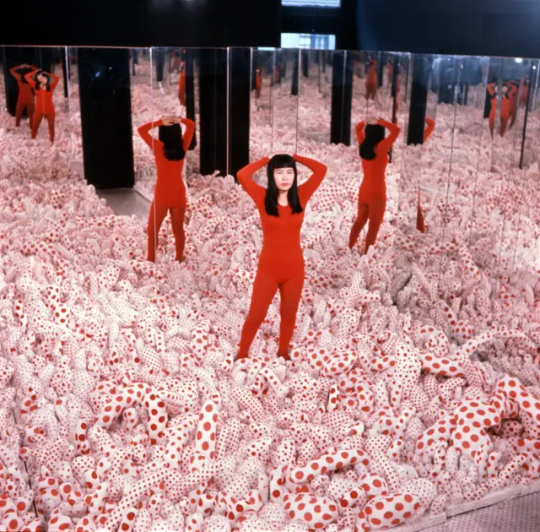
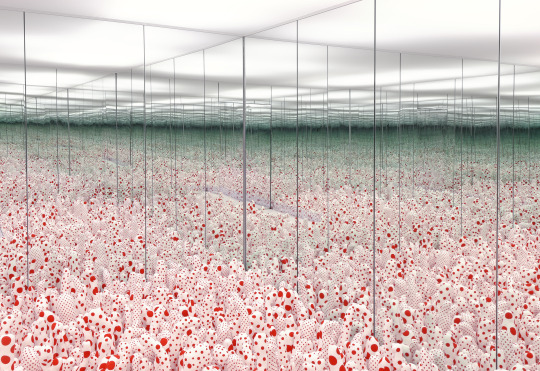
Phalli’s Field, 1965 - Yayoi Kusama
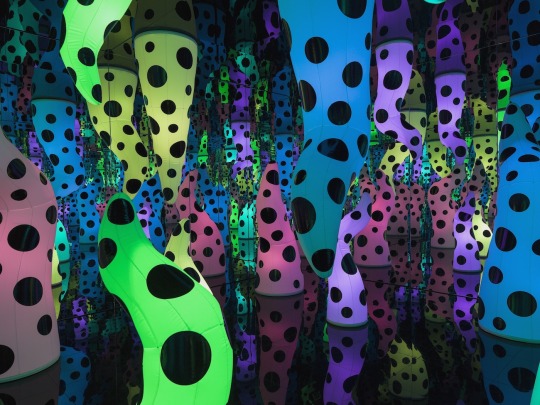
LOVE IS CALLING, 2013 - Yayoi Kusama
#CriticalThinking#DesignThinking#CollaborativeSkills#EmotionalIntelligence#GrowthMindset#CreativeProcess#Teamwork#ArtDocumentation#Leadership#StudioProjects#DesignEducation#StudentLife#ArtAndDesign#VisualMetaphors#CreativeReflection#Innovation#DesignLeadership#CreativeGrowth#MultifacetedLearning#yayoi kusama
0 notes
Text
CTS A | Week 3 Emotional Intelligence
01. We talked about "Self-management", "Self-awareness". "Empathy" and "Relationship management". Which aspect do you think you are strongest at, and which is something you should try to improve? Discuss with reference to today's activities, and even your Studio collaborations.
My strongest aspect is self-awareness. I dive deeply into my thoughts and feelings, which gives me insights into why I behave a certain way. This has helped me in Craft Workshop, where I can reflect on my creative choices and make informed decisions about what principles to apply. However, self-awareness can lead to overthinking, which affects my time management in Studio. Self-management is where I need to improve, especially when balancing multiple projects across my modules. Procrastination affects my productivity, and today's activities emphasized how better self-management could enhance my efficiency, particularly for the CPJ, where managing time well is crucial for documenting experiments and progress (Boyatzis; Brackett et al.).
In empathy, I sometimes struggle to express emotions, which hinders my ability to connect with people, especially in Photography class, where collaborative critiques are important for growth. I also tend to retreat during overwhelming moments, especially in group Studio tasks, and I noticed this weakness during today's group work. Developing stronger relationship management would make collaboration smoother across all my modules, ensuring that I can keep up with intense discussions without pulling back (Cherniss).
Francis Bacon's art resonates with me in these areas. His portrayal of emotional turmoil mirrors the inner struggles I've faced when dealing with procrastination or relationship challenges. Seeing Bacon's approach to confronting difficulties head-on reminds me that tackling my issues with self-management and relationship skills could lead to growth, both in this module and across my other classes, from Digital Skills to Studio (Sylvester).
Total word count: 250 Words
------------------------------------------------------------------------------
Works Cited:
Boyatzis, Richard E. The Resonant Leader. Harvard Business Review Press, 2008.
Brackett, Marc, et al. Emotional Intelligence: Skills for Personal Growth. Cambridge University Press, 2018.
Cherniss, Cary. Emotional Intelligence in the Workplace: Building Better Leaders and Teams. Jossey-Bass, 2010.
Sylvester, David. Francis Bacon: The Logic of Sensation. Continuum International Publishing Group, 2012.


------------------------------------------------------------------------------

Figure with Meat is a 1954 painting (Oil on canvas) - Francis Bacon.

Three Studies of Lucian Freud, 1969 (Oil on canvas) - Francis Bacon

Painting, 1946 (Oil-on-linen) - Francis Bacon

Portrait of George Dyer in a Mirror, 1968 (Oil on canvas) - Francis Bacon

Self-Portrait, 1969 (Oil on canvas) - Francis Bacon
#EmotionalIntelligence#SelfAwareness#SelfManagement#Empathy#PersonalGrowth#CreativeProcess#ArtisticExpression#FrancisBacon#Introspection#DesignThinking
0 notes
Text
CTS A | Week 2 Collaborative Skills 01. Describe your strengths and weaknesses as a collaborator: What did you do well, and what are some areas to improve? Discuss with reference to today's activities. (196 words)
My main strength as a collaborator is effective communication. I prioritize engaging with my peers and maintaining high energy, which fosters an inclusive environment where everyone feels encouraged to contribute. This openness aligns with research that highlights the importance of strong communication for trust and cohesion within teams (Wheelan). However, critical self-reflection has revealed the need to moderate my tone and volume. My enthusiasm can sometimes be overwhelming, impacting the balance of group dynamics. Research suggests that adjusting one’s communication style is essential for teamwork (Whetten and Cameron).
Beyond communication, my self-awareness helps me recognize challenges and work to improve them. Critical thinking supports this by allowing me to analyze my actions and adapt, emphasizing emotional intelligence in collaboration (Goleman). Learning from past interactions has reinforced that balancing energy with mindfulness enhances group effectiveness. In future Craft Workshop and Studio projects, applying this understanding will improve my collaboration and contribute to a more harmonious team experience. This approach resonates with my belief in the power of open communication and fostering inclusive environments. Just as Eliasson’s art encourages engagement and connection, I aim to contribute to creating a space where everyone feels heard and valued.
02. If you had more time and an unlimited budget, how would you design the monument differently? (79 words)
If I had more time and an unlimited budget, I would transform our “el gato” monument into a giant stained-glass sculpture, adding intricate details like stripes and cute eyes. The design would be expanded into a nature-blended mall, where free-roaming rescued cats create a dynamic, interactive, and inclusive environment. This would enhance the aesthetic and create an immersive, participatory experience, much like Olafur Eliasson’s works, where engagement and shared experience are central to the art itself.
Total word count: 275 Words
------------------------------------------------------------------------------
Works Cited:
Goleman, Daniel. Emotional Intelligence: Why It Can Matter More Than IQ. Bantam, 2006.
Wheelan, Susan A. Creating Effective Teams: A Guide for Members and Leaders. 5th ed., SAGE Publications, 2017.
Whetten, David A., and Kim S. Cameron. Developing Management Skills. 9th ed., Pearson, 2016.








------------------------------------------------------------------------------

The weather project, 2003 Tate Modern, London – 2003 Photo: Tate Photography (Andrew Dunkley & Marcus Leith)


Kaleidoscope for plural perspectives, 2024 The Geffen Contemporary at MOCA, Los Angeles – 2024 Photo: Studio Olafur Eliasson


Your rainbow panorama, 2006-2011

Beauty, 1993 Moderna Museet, Stockholm 2015 Photo: Anders Sune Bergn
#CollaborativeSkills#Teamwork#Communication#DesignProcess#CreativeCollaboration#ArtInspiration#LouisWain#InclusiveDesign#PositiveEnergy#Feedback#Learning#TransferableSkills#Communication Skills#SelfReflection#CollaborativeStrengths
0 notes
Text
CTS A | Week 1 What is Critical Thinking 01. Describe your understanding of critical thinking that you had before the class, and reflect on what you may have learned. (158 words)
Before this class, I believed critical thinking was primarily about logically analyzing situations and solving problems. However, I’ve learned that critical thinking involves questioning assumptions, recognizing biases, and making evidence-based decisions (Facione). This broader perspective has shifted my approach to problem-solving, allowing me to engage with the complexities of issues and consider multiple viewpoints (Lai). As a result, I can now apply this skill to my time management in Studio and CPJ, improve my Photography compositions, and refine technical approaches in Craft Workshop and Digital Skills.
02. What have you learned about Mindfulness? How might you integrate this into your learning environment? (84 words)
Initially, I viewed mindfulness as simply being present in the moment. However, research shows that mindfulness can enhance focus, stress management, and emotional regulation (Shapiro et al.). This insight has led me to integrate mindful practices, like breathing exercises, into my workflow, which helps me stay focused and calm, improving my creativity and design process (Schoeberlein and Sheth).
03. Describe an eventful moment you have experienced in this class. (63 words)
The self-reflection exercise in class was impactful, especially when reflecting on my long-term goals. It pushed me to think critically about my future and self-worth, prompting personal growth. Studies show that self-reflection boosts awareness and development (Grant et al.), which I’ve found helpful in deepening my creative practice, particularly when considering artists like Miles Johnston, whose work explores the complexity of emotions and self-awareness.
Total word count: 275 Words
------------------------------------------------------------------------------
Works Cited:
Facione, Peter A. “Critical Thinking: What It Is and Why It Counts.” Insight Assessment, 2011.
Grant, Anthony M., et al. “The Self-Reflection and Insight Scale: A New Measure of Private Self-Consciousness.” Social Behavior and Personality: An International Journal, vol. 30, no. 8, 2002, pp. 821-836.
Lai, Emily R. “Critical Thinking: A Literature Review.” Pearson Research Reports, 2011.
Schoeberlein, Deborah, and Suki Sheth. Mindful Teaching and Teaching Mindfulness: A Guide for Anyone Who Teaches Anything. Wisdom Publications, 2009.
Shapiro, Shauna L., et al. “Toward the Integration of Meditation into Higher Education: A Review of Research.” Teachers College Record, vol. 110, no. 2, 2008, pp. 257-287

Stuck in-between, titled liminal, 2018 (Pencil drawing) - Miles Johnston


Persona Revolution, 2018 (graphite on Moleskine) -Miles Johnston

Dichotomy, 2019 (graphite on Moleskin paper) - Miles Johnston

Contemplation, 2019, (Graphite on paper) -Miles Johnston

Untitled - Miles Johnston

Inflation (Graphite on paper) - Miles Johnston
#CriticalThinking#Mindfulness#SelfReflection#GraphicDesign#DesignProcess#CreativeThinking#ArtReflection#MilesJohnston#DesignStudent#CollaborationInDesign#ProblemSolving#Perspective#LearningJourney#DesignInspiration
1 note
·
View note